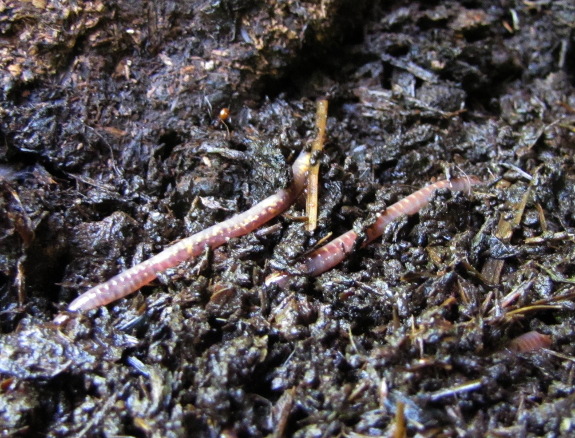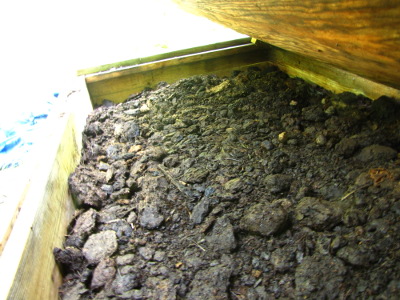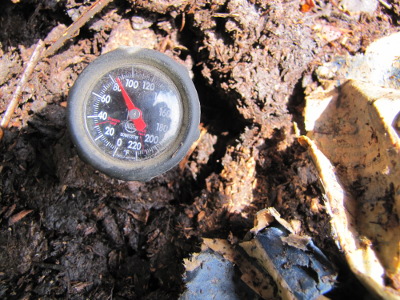
How much heat can compost worms handle?

Although the title of
this post may seem like an odd question to ask, it makes sense once you
start thinking about worm bins. After all, your goal when adding
biomass to a compost bin is similar to your efforts when making a
compost pile, and a well-made compost pile quickly heats up from
microbial action. So, can worms stand hot composting?
 The reason I started
researching this question is because the manure we used to fill our second
worm bin was fresher than I thought and soon heated up. I
didn't think to stick in the compost
thermometer until this weekend, but suspect the manure got hotter
than the 90 degrees at which compost worms perish.
The reason I started
researching this question is because the manure we used to fill our second
worm bin was fresher than I thought and soon heated up. I
didn't think to stick in the compost
thermometer until this weekend, but suspect the manure got hotter
than the 90 degrees at which compost worms perish.
In heartening news, I
tossed similarly fresh manure on top of the worms in the first worm bin
a week earlier, and I just noticed that those worms have moved to the
surface and started to work. I suspect the worms were able to
hide at the extremities of the bin, where temperatures were lower, then
slither back into the center once the first burst of heat subsided.
 I hope that the soaked
newspaper I added to the second bin gave those worms a similar escape
hatch. (Adding carbon slows down a compost pile, which lowers the
heat.) Only time will tell whether we have to seed the second bin
again, but I know that after this, I'll be careful to let manure cool
down before adding compost worms.
I hope that the soaked
newspaper I added to the second bin gave those worms a similar escape
hatch. (Adding carbon slows down a compost pile, which lowers the
heat.) Only time will tell whether we have to seed the second bin
again, but I know that after this, I'll be careful to let manure cool
down before adding compost worms.
Want more in-depth information? Browse through our books.
Or explore more posts by date or by subject.
About us: Anna Hess and Mark Hamilton spent over a decade living self-sufficiently in the mountains of Virginia before moving north to start over from scratch in the foothills of Ohio. They've experimented with permaculture, no-till gardening, trailersteading, home-based microbusinesses and much more, writing about their adventures in both blogs and books.
Want to be notified when new comments are posted on this page? Click on the RSS button after you add a comment to subscribe to the comment feed, or simply check the box beside "email replies to me" while writing your comment.

Eric --- I'd be curious to hear how hot it gets in the worm bin when it's 120 in the greenhouse. Do you have a soil thermometer to stick in and see?
Phil --- Icing the worms probably isn't a sustainable solution here, but did make me laugh.
I dont have a thermometer short enough since my bin is so shallow. My greenhouse spends the summer covered in 40% shade cloth only. Two weeks ago we hit 109 in the shade. So the ambient temp inside the structure would have to be similar, if not higher. I've seen my thermometer in the ghouse hitting 130 when I still had the plastic on, but I imagine its gone higher. Honestly, I was expecting the worms to be fried, but they are thriving.
I think the keys are: moisture, open top for circulation and not trapping in heat and gasses, shade (shade cloth plus under a table with starts), and plenty of shredded leaves to start to get the high carbon soil that will hold more water. Only stuff I have fed are leaves and mini donkey dung so far.